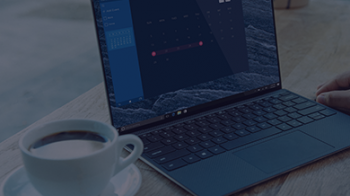Michal Marcinik, CEO and Founder of AdTonos, explains how advertisers can optimise the impact of audio and harness the capacity for deep personalisation and interaction
There is no denying the memorability of audio, whether that’s a comforting sound, familiar song, or catchy jingle. As an advertising medium, audio has huge power to drive action and brand objectives - especially in the wake of 2020.
Not only have audiences upped their audio intake, but production has also flourished despite the challenges of the pandemic. Michal Marcinik, CEO and Founder of AdTonos, believes the format is now primed to be a star performer in 2021. Here, he explains how advertisers can optimise the impact of audio and harness the capacity for deep personalisation and interaction.
How do you think the audio industry has evolved over the past year?
Audio evolution has gone beyond higher engagement volumes, we’ve also seen more diverse listening habits. The need for fast access to information and entertainment has fuelled greater adoption of voice-activated technology that offers quick and convenient audio interaction with minimal effort; from local news and weather updates to locating the nearest automotive dealership. In Q1 2020 alone, 28 million smart speakers were sold globally - and that number will only rise with the recent release of Apple’s HomePod mini.
Along with this heightened utility has come a change in audio routines. Amid widespread remote working, audiences are no longer solely tuning in during the daily commute or for evening relaxation, many are listening constantly throughout the day. And because audio creation is less affected by COVID-19 restrictions, audiences also have a wider choice of content than ever; in terms of digital streams, podcasts, and radio.
As inventory availability continues to grow and brands take advantage of refined targeting abilities, audio will further become a fixed staple in the marketing mix.
What challenges are advertisers faced with?
t the top of the list is winning audience attention. Forward-looking players have been quick to recognise and tap into audio’s growing potential and that means advertisers looking to stand out must work harder. This is particularly true for those listening via smart speakers; while the opportunity may be vast - with more than 3 billion people using voice-activated search and intelligent assistants worldwide - so is the competition. According to the latest Adobe research, users now hear twice as many ads than they did just a year ago.
Ensuring maximum resonance and returns therefore calls for efficient spend allocation and precise tailoring. But advertisers will also need to be mindful of how they handle audience data. With the cookie-less future rapidly approaching, it’s time to move away from traditional tracking and towards more sophisticated, privacy-first analysis. Advertisers will have to find new methods of learning about their audiences and optimising engagement, such as improving contextual understanding, geolocation targeting and tapping real-time reporting.
What steps can advertisers take to set themselves up for success moving forward?
Above all, it’s crucial to consider how ads can enhance the user experience. Audio is an incredibly intimate channel with plenty of room for advertisers to foster one-to-one relationships. Evidence shows that 58% of consumers find ads delivered to audio platforms, such as smart speakers, less disruptive than TV and social media. But the personal nature of audio means the effect of ill-fitting messages can be highly consequential.
Fortunately, there are many ways advertisers can ensure their ads hit the right note. For example, using native insertion that seamlessly blends ads with carefully chosen content or audio streams will increase contextual relevance, as well as positive response. Similarly, advertisers can further bolster audience ties by leveraging interactive technology. Using interactive audio ads, brands can hold immersive two-way conversations with audiences and gather granular insights about ad impact; including user-level engagement and how performance compares to other digital campaigns.
Armed with this knowledge, advertisers will then be in the ideal position to play on the unique strengths of varied formats. While effective on their own, different types of audio are often better together. In 2019, Bauer Media found that using radio and digital audio in tandem increased overall effectiveness by up to 30%. With a clear idea of which ads work and where, advertisers can build and execute integrated audio efforts that efficiently reach target listeners across smart speakers, online streams, and commercial radio.
Can you name one thing that you expect to see in the audio landscape for 2021?
Ongoing radio development, propelled - not inhibited - by digital. There are parallels between radio and other well-established broadcast mediums such as TV. For example, much like linear TV, radio is now part of a broader universe, but that doesn’t mean it’s destined to follow exactly the same path.
In contrast to conventional TV, radio has grown with shifting listener requirements and activity; avoiding online erosion by actively embracing the opportunity to maintain audience connections via digital avenues. The fact that radio continued to account for 70% of total audio listening through lockdown 1.0 is evidence of its enduring value.
Next year, we can expect radio to keep progressing in partnership with digital; sustaining strong advertising revenues, attracting audience appeal, and continually finding new ways to provide engaging content in line with changing trends and contexts.
Posted on: Monday 25 January 2021


